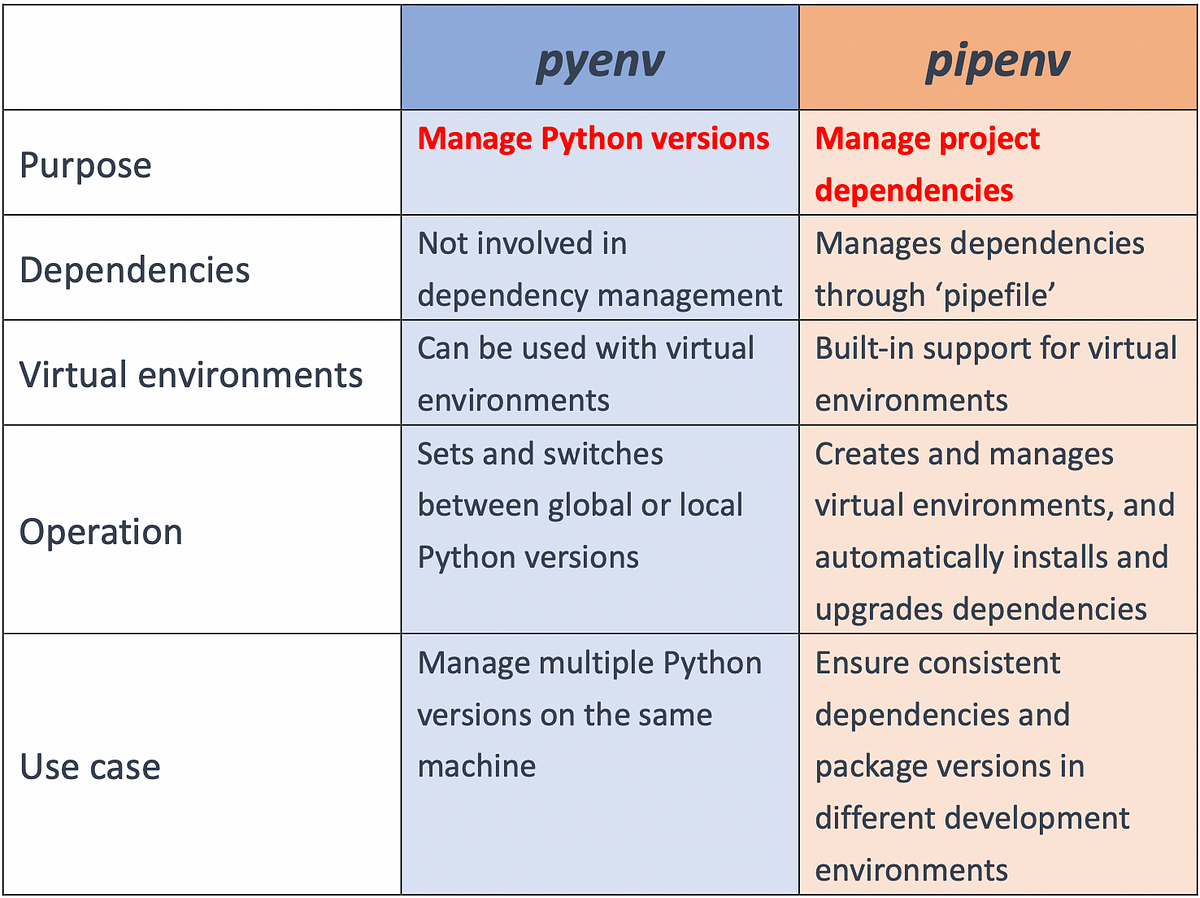You want each project to have their own environment. Virtual environments isolates Python projects by creating separate environments. Each environment has its own installation of Python packages, which avoids conflicts between different projects.
Pip
The standard package manager for Python, used to install, upgrade, and remove Python packages
- You basically download external modules using
pip- As of Python 3.4, it comes installed in Python by default
- Uses
requirements.txtfor dependency management - You need to handle virtual environments separately
Just python
python3 -m pip install PACKAGE_NAMEWith virtual environment
#Create virtual environment
python -m venv env
# Activate virtual environment
source env/bin/activate
#Install requirements
pip install -r requirements.txt
# Listing al installed packages
pip freeze
pip freeze > requirements.txt
# When using a virtual environment, `sys.executable` points to the Python executable within that virtual environment. This helps ensure that you are using the correct Python interpreter when running scripts or commands.
python
>>> import sys
>>> sys.executable #'use/bin/python'Pipenv
https://www.youtube.com/watch?v=6Qmnh5C4Pmo&t=1s
- 시간나면 볼것
Manages both virtual environments and project dependencies in a more integrated way. It aims to provide a unified tool for dependency management and virtual environment creation.
- Automatically manages
PipfileandPipfile.lockwhich replacerequirements.txtfor specifying and locking dependencies. - Automatically creates and manages a virtual environment for your project, ensuring isolation of dependencies.
Pipenvcheat sheet
pip install pipenv
# Creating a new project and virtual environment, generating a Pipfile in the directory
pipenv install
# Activating the environment
pipenv shell
# Installing the Python package you want to install
# Updating 'Pipfile' and 'Pipfile.lock'
pipenv install package_namePip vs Pipenv install
pip install langchain
- Installs the langchain package directly into the currently active Python environment, which could be either the global environment or a manually created virtual environment
pipenv install langchain - Installs the
langchainpackage into a virtual environment managed bypipenv. If no virtual environment exists,pipenvwill create one for you.